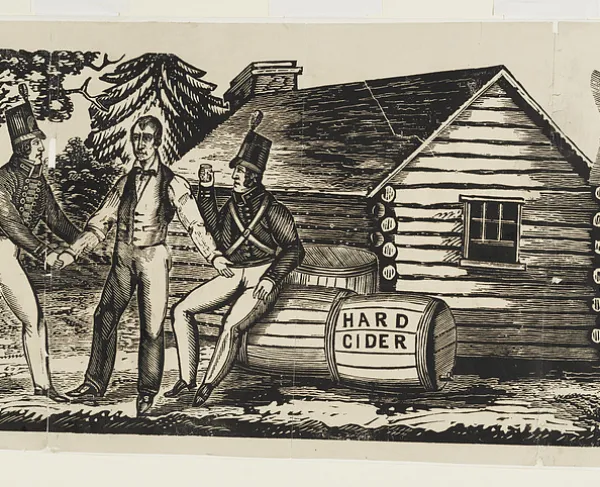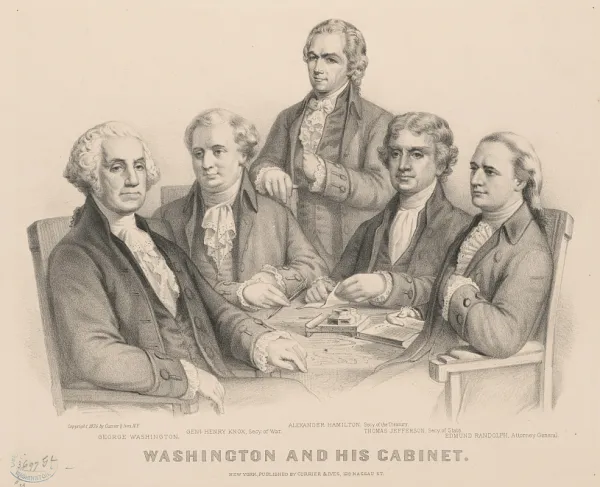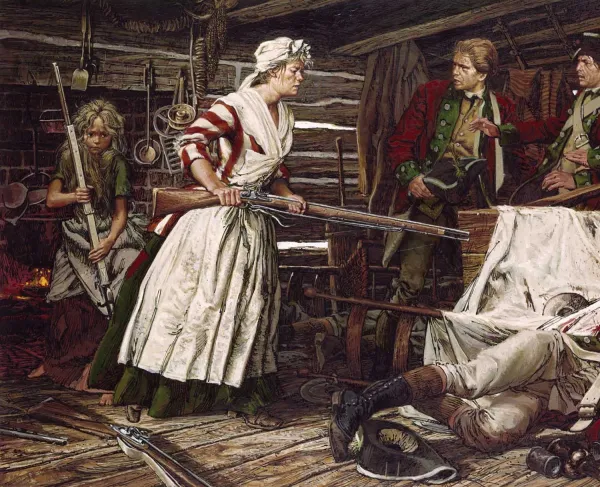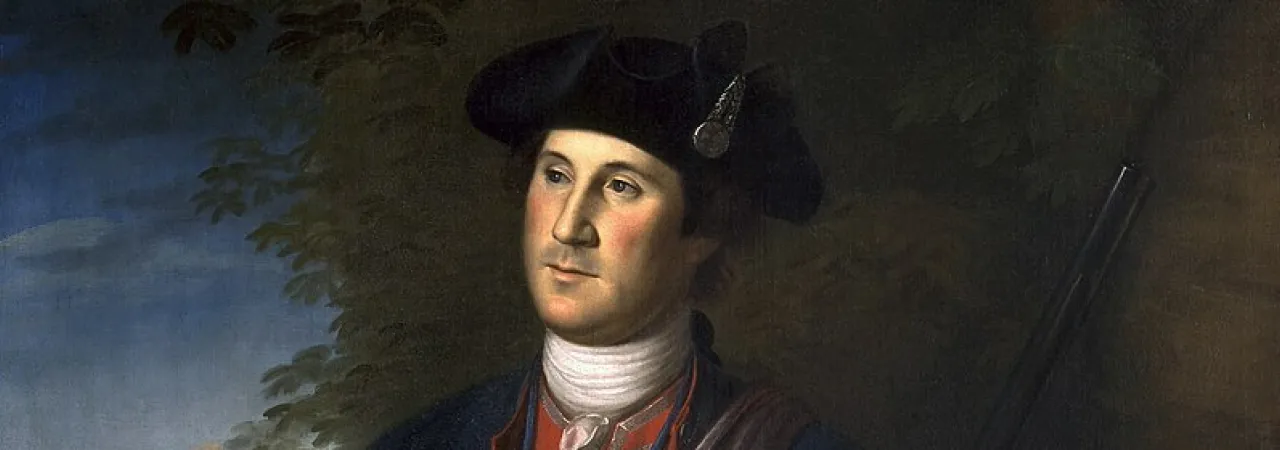
Portrait of George Washington in his colonel's uniform from the French and Indian War
George Washington was born into a world obsessed with the frontier. The wealthy elite in the colony of Virginia earned their fortunes through the planting and sale of tobacco, and through land speculation – the purchase of lands on the western frontier, which they could either use to grow more tobacco or sell to prospective settlers. Washington understood the potential of western lands from a young age. At seventeen, he received a surveyor's license from the College of William & Mary. His connections with the powerful Fairfax family helped him to become the official surveyor for Virginia’s Culpeper County. Soon he was surveying land west of the Blue Ridge Mountains, and making purchases as well. When he was only eighteen, Washington bought nearly 1,500 acres of land in the Shenandoah Valley.
Along with acquiring more land, Washington looked for other ways to enhance his social status among Virginia’s upper class. One way to rise in the ranks of society was to obtain a military rank. In February 1753, just before he turned 21 years old, George Washington became an adjutant of the Virginia militia, which granted him a commission as a major. These two arenas – land speculation and military service – would propel the young Virginian further into the frontier, and onto the pages of history.
The focus of Virginia’s land speculators was the “Ohio country,” a region between Lake Eire and the Ohio River that included not just modern Ohio but also parts of western Pennsylvania and eastern Indiana. Two of George Washington’s older brothers were partners in the Ohio Company, which hoped to obtain a massive grant of land in the Ohio country and then profit by selling it off in pieces. But the Virginians had to contend with the region’s Native inhabitants, as well as Britain’s great imperial rival, France. The French also wanted control over the Ohio country. Controlling the Ohio River would provide a secure river connection between their colonies in Canada and Louisiana, and it would block further westward expansion by the British colonies.
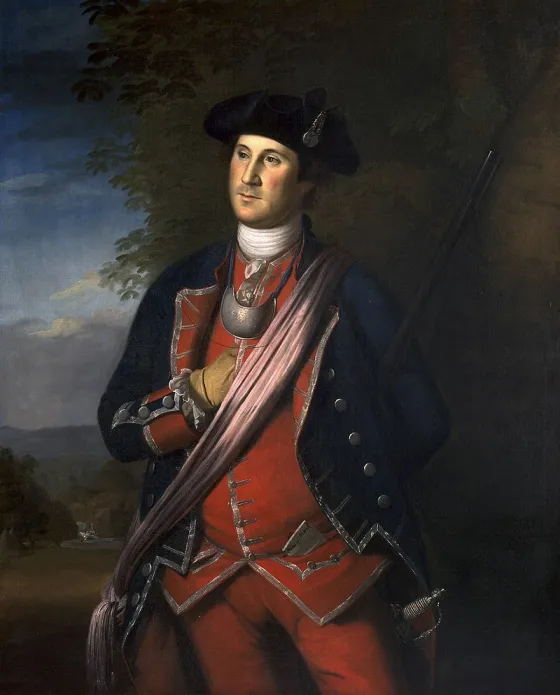
Britain and France competed for control of the Ohio country by competing for the favor of the Native peoples who lived in it, such as the Mingo, Shawnee and Delaware. British and French traders both looked to exchange European manufactured goods for the fur pelts acquired by Native trappers. British traders tended to have an advantage, offering better quality goods at lower prices than their French counterparts could. The French responded by establishing a more permanent presence in the Ohio country, starting in the 1750s. They built forts, and evicted several British traders from Native villages.
The aggressive French expansion into the Ohio country alarmed Virginia’s chief administrator, Lieutenant Governor Robert Dinwiddie. Dinwiddie was the highest-ranking official to actually live in Virginia - the royal governor, the Earl of Albemarle, never once set foot in the colony. Dinwiddie saw the French forts as both a strategic threat to the British empire, and a danger to his personal fortunes – he was a partner in the Ohio Company.
Dinwiddie drafted a message demanding that the French evacuate their forts and withdraw from the Ohio country. The next step was to find a messenger to deliver it. George Washington volunteered to act as Dinwiddie’s emissary. While he spoke neither French nor any Native languages, and had no experience in diplomatic affairs, he was well-connected, eager, and had some familiarity with the frontier from his work as a surveyor. Dinwiddie entrusted the young major with the assignment. In addition to delivering the message, Washington was also instructed to gather intelligence, by recording the number of French soldiers and finding out whatever he could about their future plans.
The twenty-one-year-old Major George Washington left Williamsburg on October 31, 1753. His first stop was Fredericksburg, where he hired Jacob van Braam to act as his French translator. Next was Will’s Creek (modern Cumberland, Maryland) where he hired the experienced frontiersman Christopher Gist and four others to accompany him into the Ohio country. The party traveled west, and arrived at the Native village of Logstown, near modern-day Baden, Pennsylvania, in late November. With Gist acting as an interpreter, Washington met in council with Native leaders from the area, presenting gifts and trying to sway them to support the British. He departed Logstown accompanied by Tanacharison, a leader who Washington referred to as “the Half King,” and a few others.
Tanacharison was a Seneca, who had been sent to the Ohio country by the powerful Iroquois Confederacy. The Iroquois claimed that the Native people of the Ohio country were their subjects, and Tanacharison was there to speak on their behalf in dealings with the European empires. The expansion of French influence in the region threatened Iroquois control, so Tanacharison was eager to help the British drive them out.
The party traveled from Logstown to the village of Venango (modern-day Franklin, Pennsylvania), where the French had seized a British trading post and turned it into an outpost they called Fort d’Anjou. On December 4, 1753, Washington met with the commander of the French garrison, Captain Philippe-Thomas Chabert de Joncaire. Joncaire was a veteran officer who had been in the French military longer than Washington had been alive. He informed the Virginian that he must deliver the message from Dinwiddie to Joncaire’s superior at Fort Le Boeuf, located near Lake Eire at modern-day Waterford, Pennsylvania. Before leaving, Washington and the others dined with the French officers. In his report on the mission, Washington wrote that the French drank “pretty plentifully,” and began to talk openly of their plans. Joncaire told Washington that “it was their absolute Design to take Possession of the Ohio.”
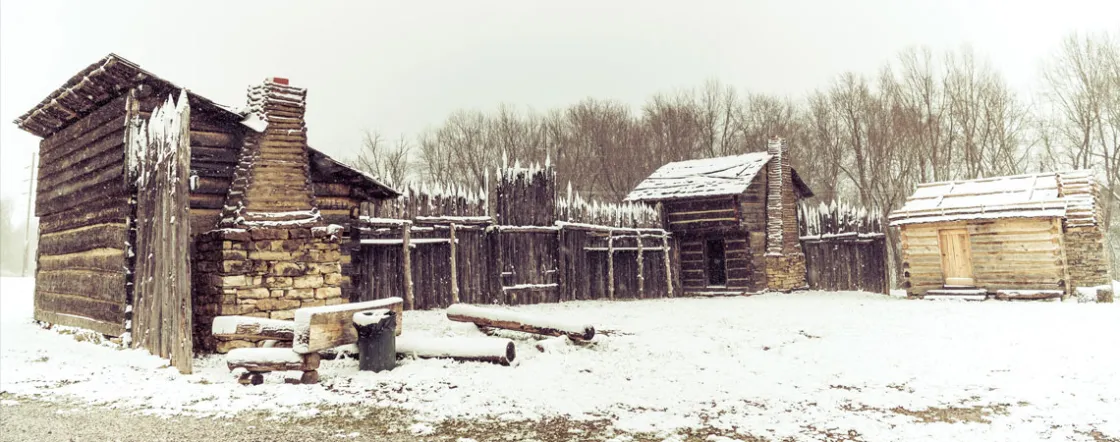
Traveling amid a raging snowstorm, Washington and his party arrived at Fort Le Boeuf on December 11, 1753. They met with the French commander, Captain Jacques Legardeur de Saint-Pierre, the next day. Washington delivered the message from Dinwiddie, and the French officers gathered to discuss their reply. While they deliberated, Washington walked around Fort Le Boeuf gathering intelligence. In his report, he listed the number of cannon and canoes – vital for moving an army along the rivers of the Ohio country.
When Saint-Pierre had finished composing a response to Dinwiddie, he gave it to Washington to deliver. The reply was polite, but firmly negative: “as to the summons you send me to retire, I do not think myself obliged to obey it.” Washington departed Fort Le Boeuf on December 16, accompanied by Christopher Gist. The pair trudged through snow and reached the Allegheny River on December 29. They had expected the river to be frozen solid, but it was not. While trying to cross the river on a makeshift raft, Washington fell into the icy water and nearly drowned.
Washington arrived in the colonial capital on January 16, 1754 and reported to Dinwiddie. The lieutenant governor ordered his written report to be published, in order to raise awareness of the French threat. The Journal of Major George Washington was printed as a monograph and in several newspapers. But Dinwiddie went beyond propaganda efforts. He ordered William Trent to raise a company of men and go to the Forks of the Ohio, the point where the Monongahela and Allegheny Rivers come together to form the Ohio River (the site of modern-day Pittsburgh). Trent was to construct a fort at the forks to establish Britain’s claim to the region.
Dinwiddie promoted George Washington to the rank of Lieutenant Colonel and ordered to raise a force of soldiers to garrison Trent’s fort. The task was a difficult one: Virginia’s government had approved a measly budget for the expedition, and Washington found difficulty finding willing volunteers and the supplies needed to equip them. He wrote the Diwiddie, telling him that many of his recruits were “without Shoes, other’s want Stockings some are without Shirts.” Nevertheless, in April 1754, the now 22-year-old Lieutenant Colonel George Washington began to march his 159 soldiers west, towards the forks of the Ohio.

